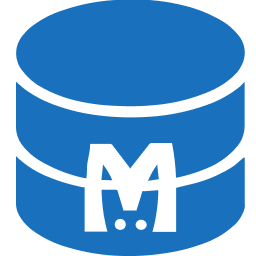You are looking at the documentation of a prior release. To read the documentation of the latest release, please
visit here.
New to KubeDB? Please start here.
CassandraAutoscaler
What is CassandraAutoscaler
CassandraAutoscaler is a Kubernetes Custom Resource Definitions (CRD). It provides a declarative configuration for autoscaling Cassandra compute resources and storage of database components in a Kubernetes native way.
CassandraAutoscaler CRD Specifications
Like any official Kubernetes resource, a CassandraAutoscaler has TypeMeta, ObjectMeta, Spec and Status sections.
Here, some sample CassandraAutoscaler CROs for autoscaling different components of database is given below:
Sample CassandraAutoscaler for cassandra cluster:
apiVersion: autoscaling.kubedb.com/v1alpha1
kind: CassandraAutoscaler
metadata:
name: cas-autoscaler
namespace: demo
spec:
databaseRef:
name: cassandra-prod
opsRequestOptions:
timeout: 3m
apply: IfReady
compute:
cassandra:
trigger: "On"
podLifeTimeThreshold: 5m
resourceDiffPercentage: 20
minAllowed:
cpu: 800m
memory: 2Gi
maxAllowed:
cpu: 2
memory: 3Gi
controlledResources: ["cpu", "memory"]
containerControlledValues: "RequestsAndLimits"
Here, we are going to describe the various sections of a CassandraAutoscaler crd.
A CassandraAutoscaler object has the following fields in the spec section.
spec.databaseRef
spec.databaseRef is a required field that point to the Cassandra object for which the autoscaling will be performed. This field consists of the following sub-field:
- spec.databaseRef.name : specifies the name of the Cassandra object.
spec.opsRequestOptions
These are the options to pass in the internally created opsRequest CRO. opsRequestOptions has two fields.
spec.compute
spec.compute specifies the autoscaling configuration for the compute resources i.e. cpu and memory of the database components. This field consists of the following sub-field:
spec.compute.cassandraindicates the desired compute autoscaling configuration for Cassandra database.
spec.compute.cassandra has the following sub-fields:
triggerindicates if compute autoscaling is enabled for this component of the database. If “On” then compute autoscaling is enabled. If “Off” then compute autoscaling is disabled.minAllowedspecifies the minimal amount of resources that will be recommended, default is no minimum.maxAllowedspecifies the maximum amount of resources that will be recommended, default is no maximum.controlledResourcesspecifies which type of compute resources (cpu and memory) are allowed for autoscaling. Allowed values are “cpu” and “memory”.containerControlledValuesspecifies which resource values should be controlled. Allowed values are “RequestsAndLimits” and “RequestsOnly”.resourceDiffPercentagespecifies the minimum resource difference between recommended value and the current value in percentage. If the difference percentage is greater than this value than autoscaling will be triggered.podLifeTimeThresholdspecifies the minimum pod lifetime of at least one of the pods before triggering autoscaling.
There are two more fields, those are only specifiable for the percona variant inMemory databases.
inMemoryStorage.UsageThresholdPercentageIf db uses more than usageThresholdPercentage of the total memory, memoryStorage should be increased.inMemoryStorage.ScalingFactorPercentageIf db uses more than usageThresholdPercentage of the total memory, memoryStorage should be increased by this given scaling percentage.
spec.storage
spec.storage specifies the autoscaling configuration for the storage resources of the database components. This field consists of the following sub-field:
spec.storage.cassandraindicates the desired storage autoscaling configuration for Cassandra cluster.
All of them has the following sub-fields:
triggerindicates if storage autoscaling is enabled for this component of the database. If “On” then storage autoscaling is enabled. If “Off” then storage autoscaling is disabled.usageThresholdindicates usage percentage threshold, if the current storage usage exceeds then storage autoscaling will be triggered.scalingThresholdindicates the percentage of the current storage that will be scaled.expansionModeindicates the volume expansion mode.



































